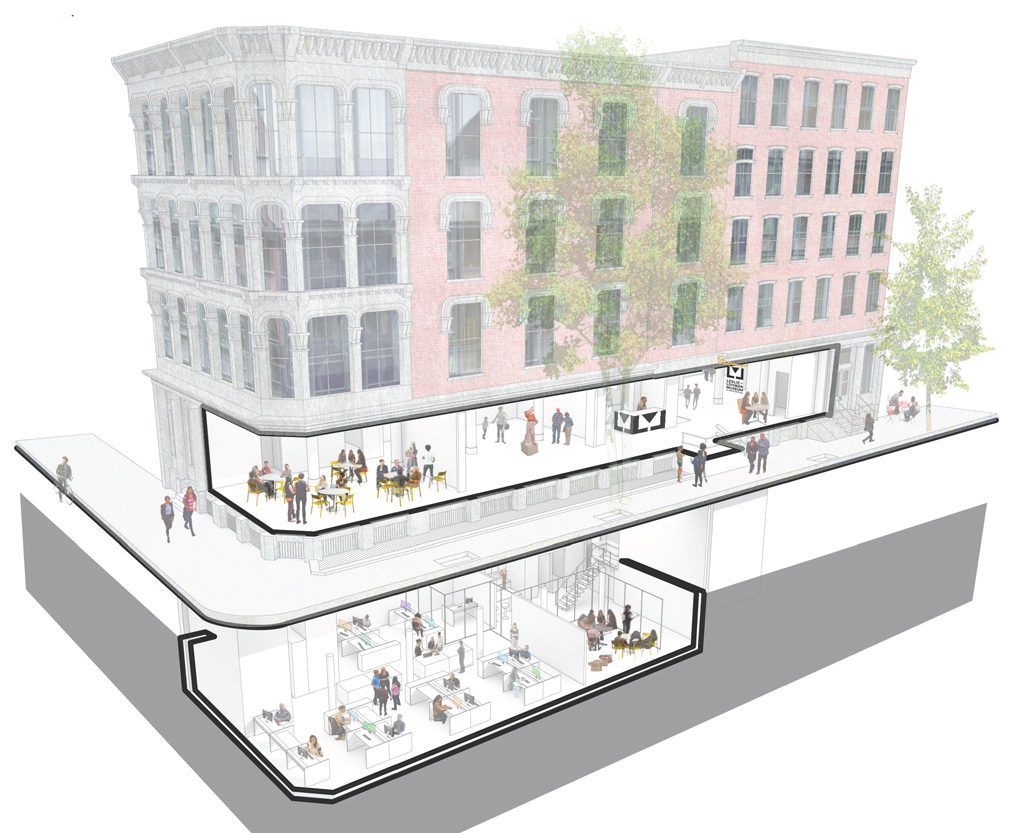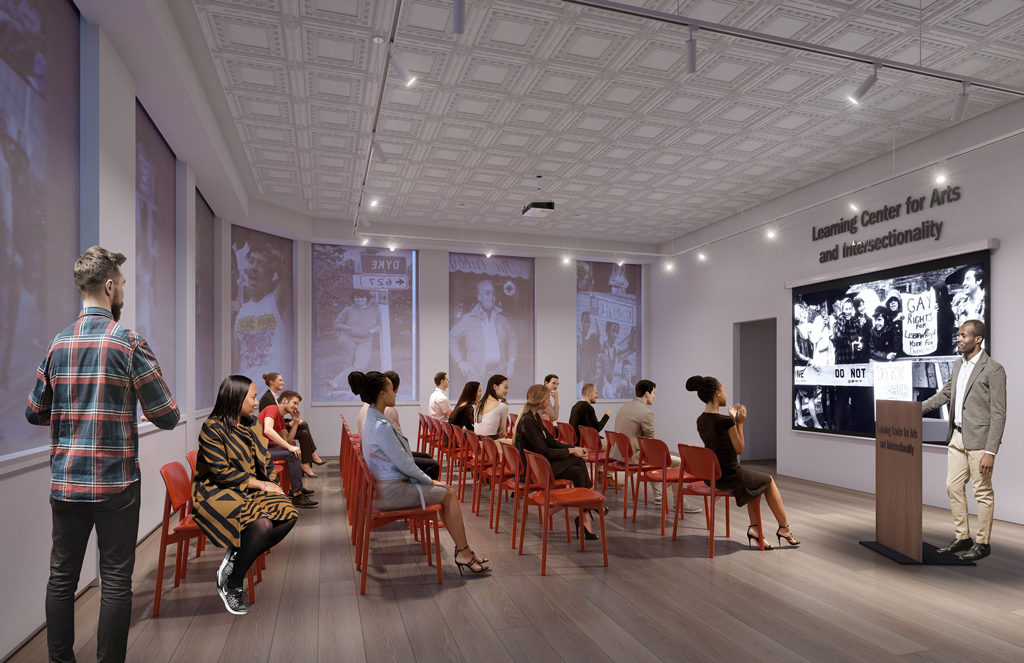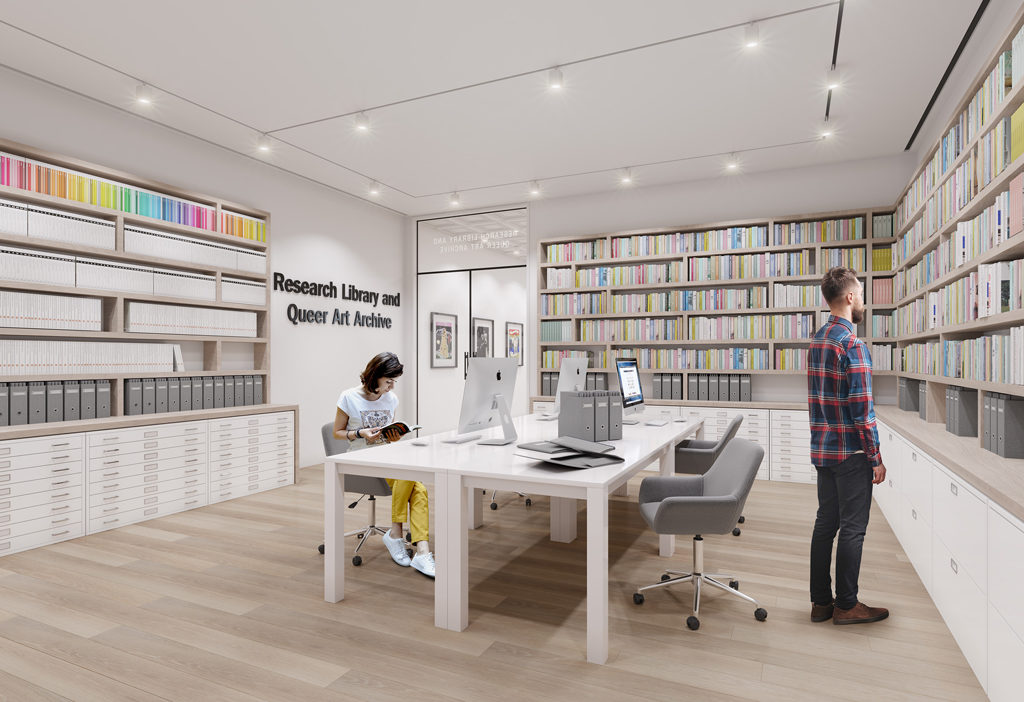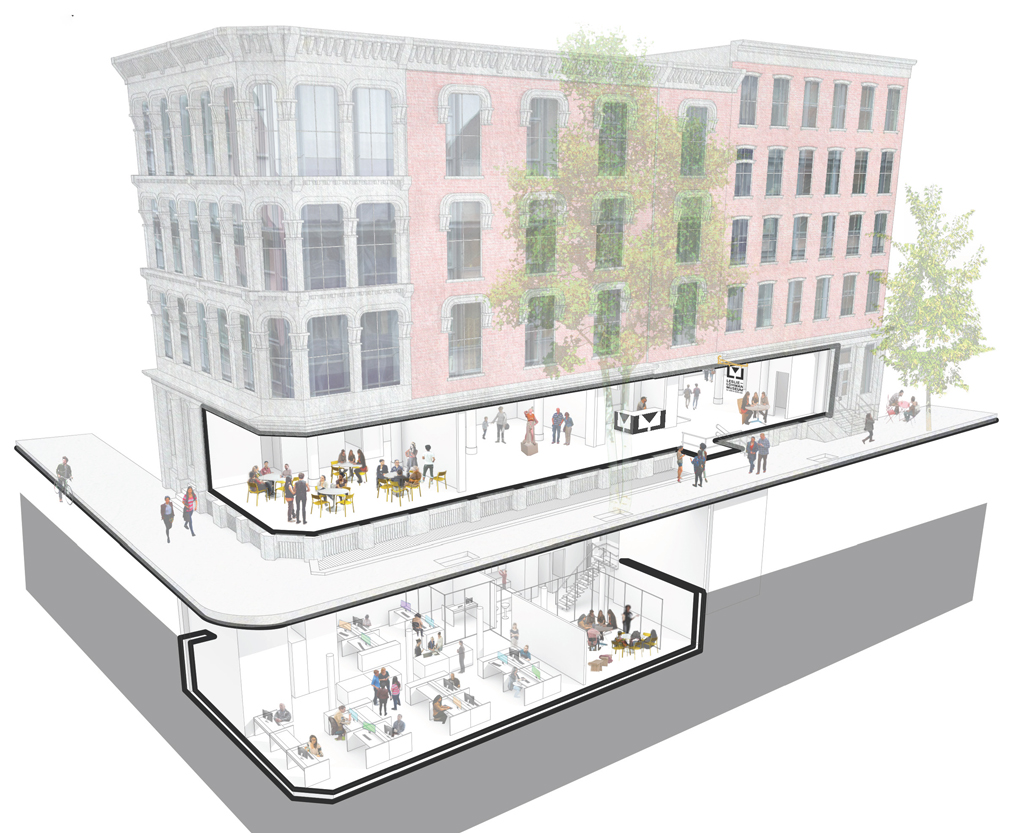[ad_1]

A rendering of the Leslie-Lohman Museum of Art’s building after renovations from a $7 million capital campaign.
COURTESY VAMOS ARCHITECTS
At its annual fall gala this evening, October 22, the world’s only museum dedicated to the presentation of queer art will make several big-ticket announcements, from the start of a capital campaign for building renovations to a $500,000 bequest for operations to the establishment of its first endowment fund.
Perhaps the biggest change for the institution, though, is being made to one of its defining facets: its name. The Leslie-Lohman Museum of Gay and Lesbian Art in New York will now be called the Leslie-Lohman Museum of Art. (It will also begin to use taglines in its marketing, the first one being “The Future Is Queer,” the theme of this evening’s gala.)
Gonzalo Casals, the Leslie-Lohman’s executive director, told ARTnews that the name change is emblematic of “what the vision of the future of the museum is.” He pointed out that the museum’s founding and the Stonewall Uprising both took place in June 1969, and said that while reflecting on the past can be useful, it is equally important to ensure that “the past is informing the present, so we can be projected into the future. Part of that was embracing the idea of queerness in the most expansive way possible. In doing that it became evident that our name needed to be as expansive as the concept of queerness, so that everyone feels welcome to the museum.”
[Read a roundtable discussion about Stonewall’s impact on the art world.]
The museum will also establish a $7 million capital campaign that will allow the institution to alter its public-facing spaces, create a new community engagement and education center, and make an upgrade to its archives and library that will better serve the needs of researchers. Three New York City civic entities—the City Council, the Department of Cultural Affairs, and the Manhattan Borough President’s office—have together pledged a combined $3.4 million to the campaign, making this the first time that the museum has received capital funding from the city. It’s the largest gift the museum has received to date.

A rendering of the Leslie-Lohman Museum of Art’s new Learning Center for Arts and Intersectionality.
COURTESY VAMOS ARCHITECTS
Casals said that New York is facing a wave of displacements of peoples and small businesses, and this particularly affects queer spaces, from bars to bookstores. The city must understand the “importance of physical spaces for arts and culture that mirror the experiences of marginalized groups,” he said, adding, “it’s amazing that in 50 years we’ve moved from not being able to be in spaces as ourselves to having this support.”
“The Leslie-Lohman Museum has become a cultural hub for the LGBTQ community at large,” Manhattan Borough President Gale A. Brewer told ARTnews in an email. “The dialogue provoked during a visit to this museum is priceless to the community it represents, and to New York City as a whole.”
The Leslie-Lohman recently underwent a renovation that doubled its exhibition space in 2017. Though the capital campaign is primarily intended to re-up the museum’s infrastructure, Casals said that staff saw it as an opportunity to further fulfill the vision he has for the museum. “Most of the public spaces of the museum are gallery spaces,” Casals said. “That in a way limits the vision that we have for the museum that is so much more than just hanging artworks on the wall.”
The museum’s new Learning Center for Arts and Intersectionality will be a 650-square-foot flexible space for various types of programming, and it will take over the institution’s current administrative offices, which will move downstairs into the museum’s basement level. In this space, the education team will mount exhibitions, lead tours and workshops, and conduct an after-school program with youth and public-school students in mind that places an emphasis on queer identities and intersectionality. The museum will also establish a more accessible space for its research library and archives to better serve the recent uptick in scholars who have come to do research at the museum.

A rendering of the Leslie-Lohman’s new Research Library and Queer Art Archive, part of its $7 million capital campaign.
COURTESY VAMOS ARCHITECTS
Two major gifts will further augment the Leslie-Lohman’s rich holdings. One comes from the estate of the late photographer Charles O’Neal, which has given $150,000 toward an endowment fund—the museum’s first—that will be used specifically for yearly acquisitions of photography by queer artists. The other is a bequest from a Leslie-Lohman trustee, the collector Michael Manganiello, who will be honored at the museum’s gala tonight and is donating 125 works, including photographs by Donna Gottschalk and George Platt Lynes, from his collection of contemporary queer art. Along with the works, Manganiello has promised $500,000 for the museum’s operational support.
“Going to the museum taught me that I didn’t have to edit out certain parts of my life as an LGBT person,” Manganiello said. “I wanted the money to be enough to make a difference and to make a statement that sets a bar for future donations.”
Speaking to other long-term plans for the museum, Casals said that the Leslie-Lohman will continue to work toward supporting artists in various ways: through its career-development fellowship for artists now in its third year, acquiring new work by artists and filling in holes in its collection, and creating a survey exhibition every few years that will provide “a snapshot of a moment of queer contemporary art.” He pointed to Queer Holdings, a publication the museum produced this year that looks at the museum’s permanent collection and includes essays that are critical of it, particularly its emphasis on the work of white cis gay men over other members of the LGBTQ+ community.
“Rather than doing a book that is celebratory of the past, we did a book that is very critical of how our collection looks, what’s missing, and what are the possible ways forward to make this collection more representative of the queer community,” Casals said. Taken together, it’s a way for the museum, he continued, to look for possible answers to a question that will remain open-ended: “What is the role of this museum in the 21st century?”
[ad_2]
Source link

